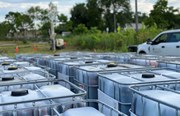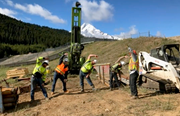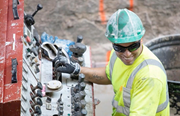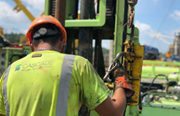Designing an Effective (and Safe) Thermal System at Fractured Rock Sites
By: CascadeIn our previous blog post, Treatment of Fractured Rock – How is it Different? we introduced the two main challenges when working on fractured bedrock sites. We focused that post on the first challenge: How to decide on a thermal treatment volume without making the problem worse. In this post, we’ll discuss the second major challenge, which is how to design and implement an effective and safe thermal system at challenging fractured rock sites.
Both of the main challenges were discussed at length in our webinar, “Thermal Conductive Heating – The remedy option for bedrock.” If you missed the live webinar presentation, the recording is now available. If you don’t want to miss out on another opportunity to learn from one of our experts, please update your email preference settings to include our webinar communications.
Once the treatment volume has been set, the next step is to determine the best thermal method for the site. Cascade Thermal and our current staff have worked at seven different bedrock sites. Our lessons learned include that:
- It has proven extremely difficult to heat fractured rock sites with steam alone. When possible, heating durations have been very long, and hydraulic and pneumatic control has been challenging.
- Thermal conduction heating (TCH) has proven very effective for heating of the matrix blocks – by simple heat transfer from hot borings.
- It is desirable to extract fluids from each the heater borings. This ensures the vapors we generate have a place to go – back towards the heaters and out and up through co-located vacuum extraction wells.
- Electrical resistance heating (ERH) is applicable in some types of bedrock, typically the ones with electrical resistivity values below 500 Ohm-meters. Porous and wet sandstone, for example, can be heated using either ERH or TCH. In drier rock, rock with modest porosity (on the order of 10% or less), and deep crystalline rock, only TCH can achieve boiling temperatures and ensure proper thermal treatment, because electric current flow will be limited.
- At sites with a lot of groundwater flow in some fractures, the use of steam injection to heat those fracture zones can help optimize the treatment, but one still needs to heat the matrix in order to remove most of the mass. The combination of TCH and steam injection is promising.
At one of our sites, we succeeded in heating the matrix blocks, but not the fractures where water flowed. This meant that the reduction of TCE concentrations in the rock samples was more modest near the fractures, as illustrated in the plot below.
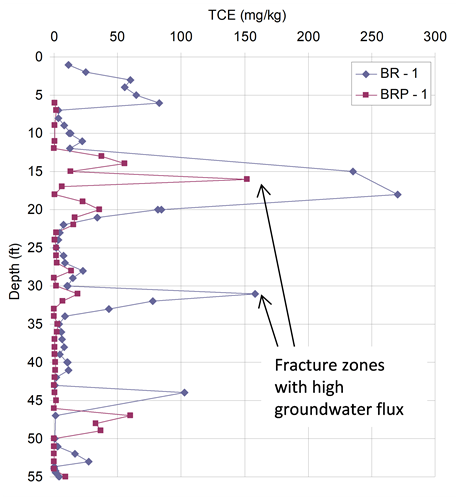
Rock concentrations before (BR-1, blue) and after (BRP-1, magenta) the TC pilot test at the NAWC site in West Trenton, NJ. Note that the system was not operated long enough to target complete TCE removal.
Water flowed rapidly in fractures at depths of 17 and 31 ft (depths where the TCE reduction was modest). We believe that the cold groundwater flow kept the temperature low enough that the TCE could not be boiled and removed from the matrix in those locations. In contrast, TCE concentrations in the matrix blocks away from the fractures were reduced to modest levels.
At another site in California, we treated a 100-foot deep TCE site using TCH. The figure below shows the Tier-1 system used. Rock sampling during installation was used to optimize the treatment volume – and the shape changed a lot based on the data.
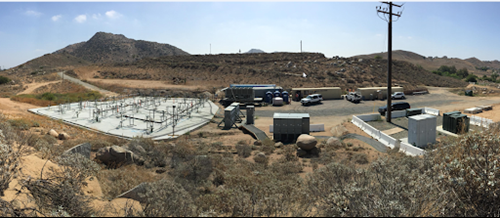
TCH treatment to 100 ft into granite at a site in California, completed in 2017.
This site was successfully heated and treated – without the need for steam injection to enhance treatment of the fractures. Extraction wells co-located with each heater ensured that the TCE was captured, and provided an option to sample the vapor stream from all areas of the site and document that TCE levels were reduced by approximately three orders of magnitude by the treatment.
In conclusion, the most robust and predictable thermal method for fractured rock is TCH, and DNAPL constituents can be effectively removed. One can heat any type of solid matrix because the heat moves under simple thermal gradients. The hot boreholes allow for vapor control, as the contaminants are extracted from every borehole near the locations where they vaporize. Below the water table, the addition of steam in select locations may enhance the process by heating those fractures in which cold water would otherwise move and slow the heating.
As mentioned previously, this topic was presented with expanded details and including a question & answer session in the webinar, Thermal Conductive Heating – The Remedy Option for Deep Bedrock.
FOLLOWING THE WEBINAR PRESENTATION, WE HELD A BRIEF QUESTION AND ANSWER SESSION. BELOW ARE SOME OF THE QUESTIONS ASKED ALONG WITH CONCISE RESPONSES:
Q: This sounds just like a Geothermal System, can you use an Open Loop System to do this same process, heat the water to boiling, send it down the hole and extract it from the surrounding wells and repeat the process?
A: Yes, we can heat the boreholes using fluids as well, but the temperature is then limited to the fluid temperature. Unless gas burners are used, the modest temperatures would mean that the borings should be much closer together, increasing the drilling and construction costs.
Q: Is there a minimum/maximum size of a borehole that you need to apply this system?
A: For TCH we install casings of 2-3 inches in diameter. We can direct push them, or drill and either grout or set in sandpack. The latter means boreholes of 6 inches or larger
Q: How much does a site like SRSNE cost to remediate?
A: The SRSNE site was very large (more than 500 heaters), and 500,000 lbs of CVOC removed. The cost was above $10 MM when all is included
Q: You mentioned that TCH is not particularly effective when rock has high porosity or is saturated (or below water table). Does this mean the technology is really best for source area treatment within the vadose zone, but not when the highest mass is now resident below the water table?
A: What I meant to say is that TCH and ERH both work well for rock with higher porosity and moisture content. For low porosity and dry rock, TCH is favored because the electricity used for ERH does not penetrate well (the electrical resistivity is too high).
Q: Is there a preference for installation, drilling technology?
A: Direct push and rotosonicis often most economical, but in crystalline rock, we often need air rotary to get to depth.
Q: Can you give me an idea of the typical electrical consumption for TCH? I understand it may depend on the number of heaters and size of plume but generally speaking may consider a one-acre plume.
A: Between 150 and 250 kWh per cubic yard for VOCs, and double that for SVOCs
Q: Why do use steam in fractures? wouldn't steam flow from the preferential pathways and reduce the treatment efficiency?
A: Steam heats the fractures and reduces the cooling that can be caused by water inflow from surrounding areas. One needs a good understanding of the fracture network before steam is injected and extracted unless steam injection is performed on the perimeter in clean conditions to block water flow.
Contact us for more information on the treatment of fractured rock, or for an evaluation of a site if “going hot” is one of your options.





